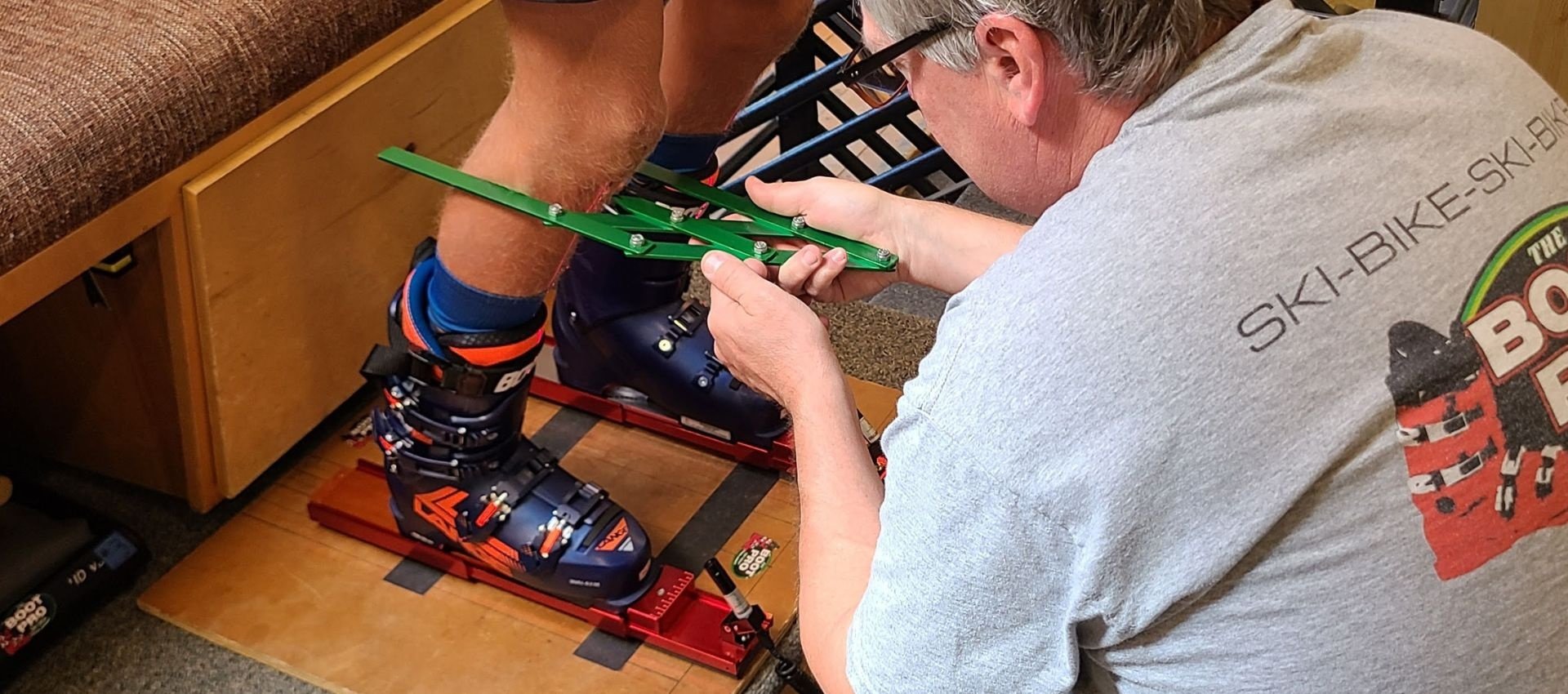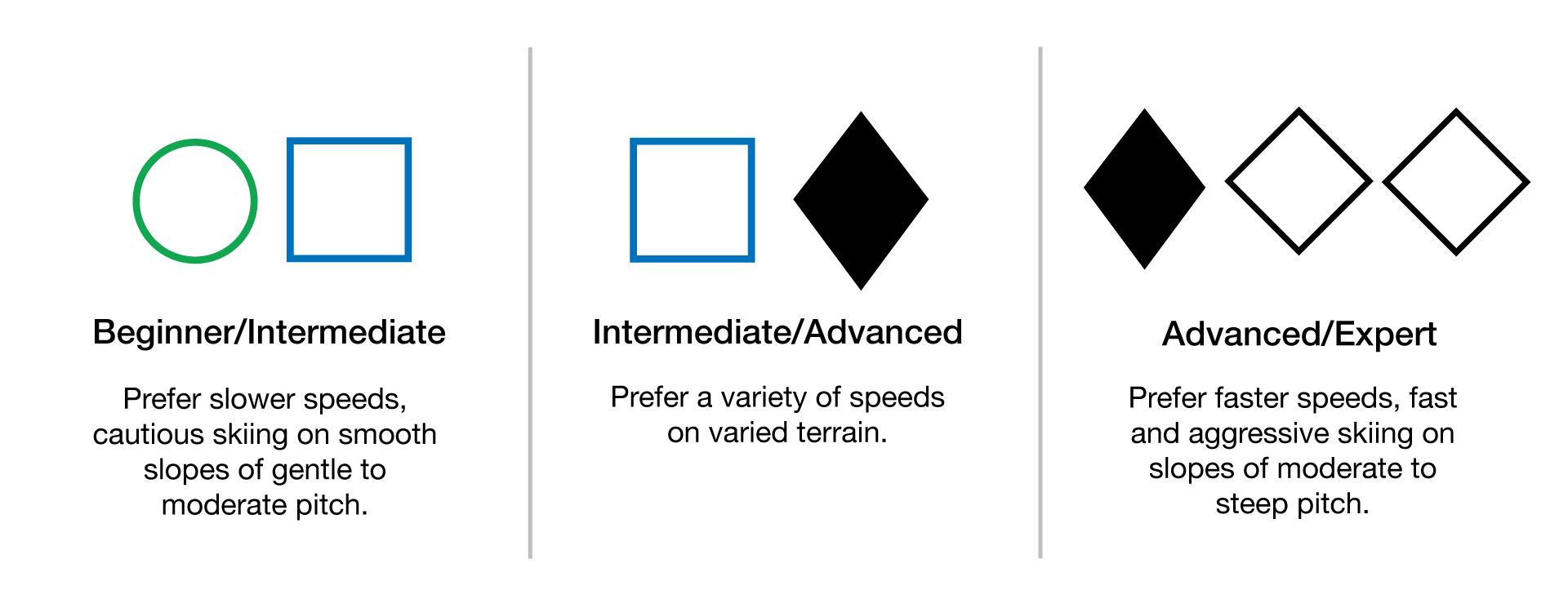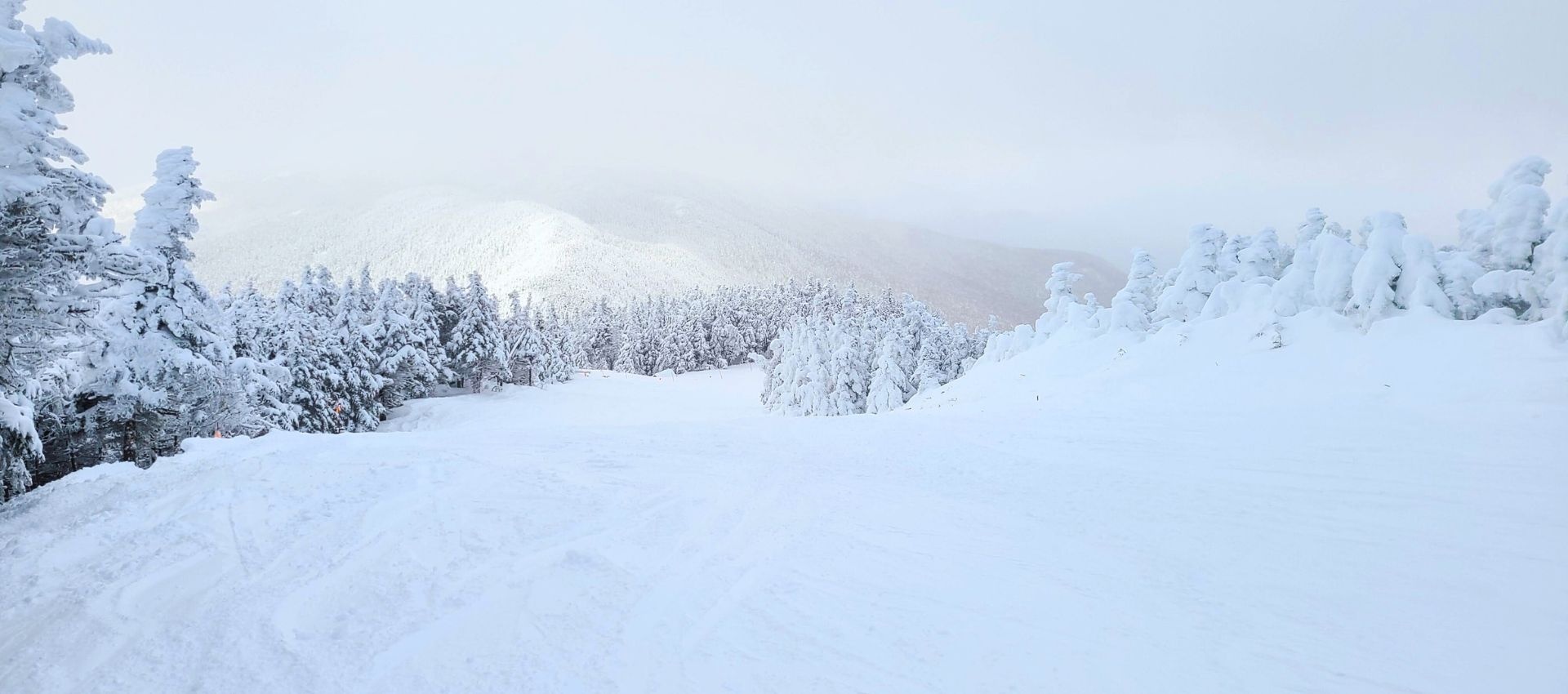Boot Fitting
How to Choose Ski Boots
Choosing the right ski boots is the most important factor in having a successful and enjoyable day on the mountain. Our boot fitting experts can help you identify the fight fit for you. Who likes cold feet anyway?
Skier Type
Experience, age, physical fitness, previous injury, years skiing are just some of the things that factor into "skier type". You know yourself best and can decide where you fit into the spectrum of skier types. Knowing your skier type will help direct a bootfitter to the best ski boot for you.
Size
Be sure you buy the correct size ski boot! Many people make the mistake of buying a boot that’s roomy and comfortable to walk in when first put on the foot. A snug fit is what’s needed for performance and control, and ultimately, less stress on the body. There are many factors that contribute to a properly fit ski boot.
Choosing The Right Size
First, have your foot measured before buying a new boot. Next, check the “shell size” by removing the liner and making sure there’s about 1” between the heel and the back of the boot.
| Ski Boot Sizing | Proper Fit |
|---|---|
|
|
Last
Last refers to the width of the plastic shell at the toe area known as the “toe box”. This corresponds to the width of the forefoot. Narrow feet typically are better suited to a narrow lasted boot while a wide foot fits better in a wide lasted boot. Some boots are even made to accommodate extra wide feet with special expanding materials built into the shell at the widest point of the foot. Below is a general guideline to Lasts however, they differ depending on the boot, whether it's a men's or ladies boot and the manufacturers interpretation of last.
| Last Fit | Narrow Fit | Average Fit | Wide Fit |
|---|---|---|---|
|
|
|
|
Flex
The flex rating of a ski boot corresponds to the degree of forward movement that the boot will yield when the skier bends the knees and applies pressure when turning. Generally, the more aggressive the skier the stiffer the flex should be to support the force applied when skiing fast. The skier’s weight, height and the range of motion of the foot can also be factored in when choosing the flex of the boot.
Flex Rating
Cuff Shape
Ski boots have varying cuff shapes. Depending on the shape of your lower leg some boots will have cuffs that are more appropriate for you. Also, men’s and women’s cuff shapes vary significantly as women’s calves extend lower down on their legs than men’s. Cuffs can be adjusted laterally and should be done by a qualified bootfitter.
Boot Fitting Services
| Liners | Custom Footbeds | Stance Analysis | Lifter Installation |
|---|---|---|---|
|
|
|
|
| Planing | Shell Stretching | Heat Molding of Customizable Shells | Liner Modifications |
|---|---|---|---|
|
|
|
|
| Custom Liners | Heater Installation | Booster Strap Installation | Buckle Repositioning & Replacement |
|---|---|---|---|
|
|
|
|
Featured Products
- https://www.thebootpro.net/rsj-65-2025.html
- https://www.thebootpro.net/redster-s9-fis-w-2025.html
- https://www.thebootpro.net/redster-sti-70-lc-2025.html
- https://www.thebootpro.net/xp-120-positrack-2025.html





